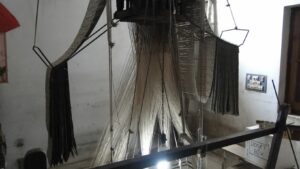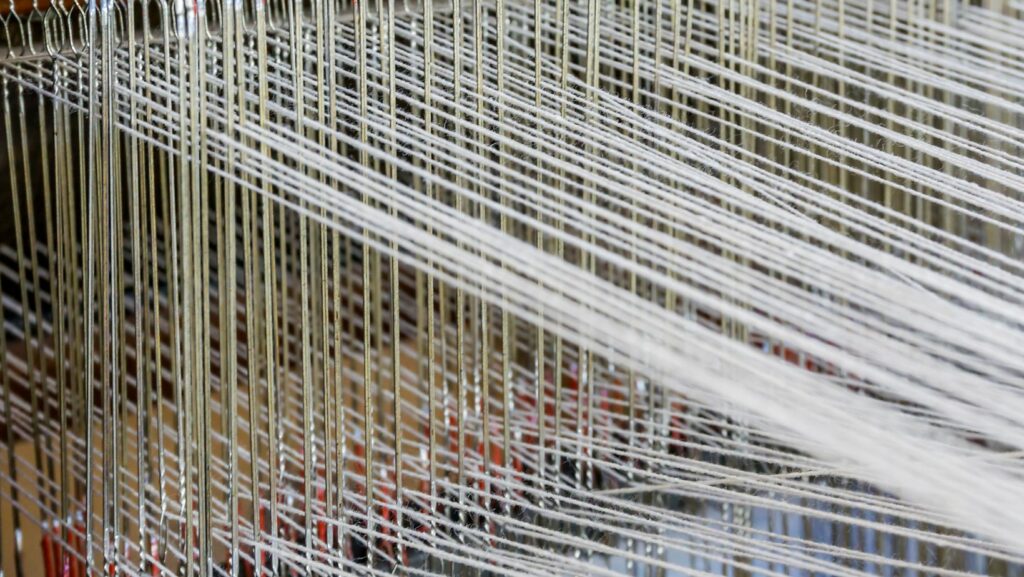 Fashion style and stitch loom have revolutionized the way we approach textile design. These innovative techniques blend creativity with precision, offering a fresh perspective on traditional craftsmanship. With fashion punch style, intricate patterns and designs are effortlessly incorporated into fabrics, adding a touch of uniqueness to every piece. Stitch loom, on the other hand, introduces a new dimension to textile artistry by weaving together threads in a meticulous yet artistic manner. This method allows for the creation of complex textures and patterns that elevate the aesthetic appeal of garments and accessories
Fashion style and stitch loom have revolutionized the way we approach textile design. These innovative techniques blend creativity with precision, offering a fresh perspective on traditional craftsmanship. With fashion punch style, intricate patterns and designs are effortlessly incorporated into fabrics, adding a touch of uniqueness to every piece. Stitch loom, on the other hand, introduces a new dimension to textile artistry by weaving together threads in a meticulous yet artistic manner. This method allows for the creation of complex textures and patterns that elevate the aesthetic appeal of garments and accessories
Fashion Punch Style And Stitch Loom
What Is the Fashion Punch Style?
Fashion punch style is a technique that involves using a needle-like tool with a sharp point to create intricate designs on fabrics. It is a form of embellishment that allows designers to add detailed patterns and textures to garments, giving them a unique and customized look. By punching the fabric with the tool, designers can achieve a variety of effects, from delicate lace-like patterns to bold geometric shapes. This technique is popular for creating eye-catching designs on clothing, accessories, and home decor items.
The Role of Stitch Looms in Modern Fashion
 Stitch looms play a crucial role in modern fashion by revolutionizing the way textiles are constructed. These looms are used to weave threads together in a precise and controlled manner, allowing designers to create complex textures and patterns with ease. By using stitch looms, designers can experiment with different weaving techniques, yarns, and colors to produce visually stunning fabrics for clothing and accessories. The use of stitch looms in fashion design has opened up a world of possibilities for creating unique and innovative textile designs that appeal to a wide range of audiences.
Stitch looms play a crucial role in modern fashion by revolutionizing the way textiles are constructed. These looms are used to weave threads together in a precise and controlled manner, allowing designers to create complex textures and patterns with ease. By using stitch looms, designers can experiment with different weaving techniques, yarns, and colors to produce visually stunning fabrics for clothing and accessories. The use of stitch looms in fashion design has opened up a world of possibilities for creating unique and innovative textile designs that appeal to a wide range of audiences.
Materials Used in Stitch Looms
When working with stitch looms, designers have a variety of materials at their disposal to create unique and visually appealing textiles. Some key materials commonly used in stitch looms include yarn, thread, fabric strips, and embellishments like beads or sequins.
- Yarn: Yarn is the primary material used in the weaving process and comes in a variety of fibers, weights, and colors to offer endless creative possibilities.
- Thread: Thread is used for the finer details in weaving, such as creating intricate patterns or adding embellishments to the textile.
- Fabric Strips: Fabric strips are a creative addition to weaving projects, adding texture and depth to the final piece.
- Embellishments: Designers can enhance their woven textiles by incorporating beads, sequins, or other decorative elements into the fabric.
By experimenting with different materials in their stitch loom projects, designers can push the boundaries of traditional weaving techniques and create innovative textile designs that stand out in the world of fashion.
The Process of Creating Designs with a Stitch Loom
Step-by-Step Guide to Basic Patterns
 Designing with a stitch loom involves a systematic approach that allows for the creation of various patterns. Begin by setting up the warp threads on the loom, ensuring they are evenly spaced and under proper tension. Next, attach the heddles to control the raising and lowering of the warp threads. With the shuttle, weave the weft thread through the warp threads to form the base of the fabric. Utilize the reed to beat the weft into place, securing the weft threads tightly together. Repeat these steps to build layers and achieve different textures and patterns.
Designing with a stitch loom involves a systematic approach that allows for the creation of various patterns. Begin by setting up the warp threads on the loom, ensuring they are evenly spaced and under proper tension. Next, attach the heddles to control the raising and lowering of the warp threads. With the shuttle, weave the weft thread through the warp threads to form the base of the fabric. Utilize the reed to beat the weft into place, securing the weft threads tightly together. Repeat these steps to build layers and achieve different textures and patterns.
Advanced Techniques and Patterns
For those looking to elevate their designs, exploring advanced techniques on a stitch loom can unlock a world of creative possibilities. Experiment with various weave structures like twills, satins, or complex overshot patterns to add depth and intricacy to your textiles. Incorporate additional elements such as supplemental warps or wefts, brocade techniques, or differential shrinkage to introduce dimension and visual interest to your creations. By mastering these advanced techniques, designers can push the boundaries of traditional weaving and craft truly unique and captivating textile designs.

